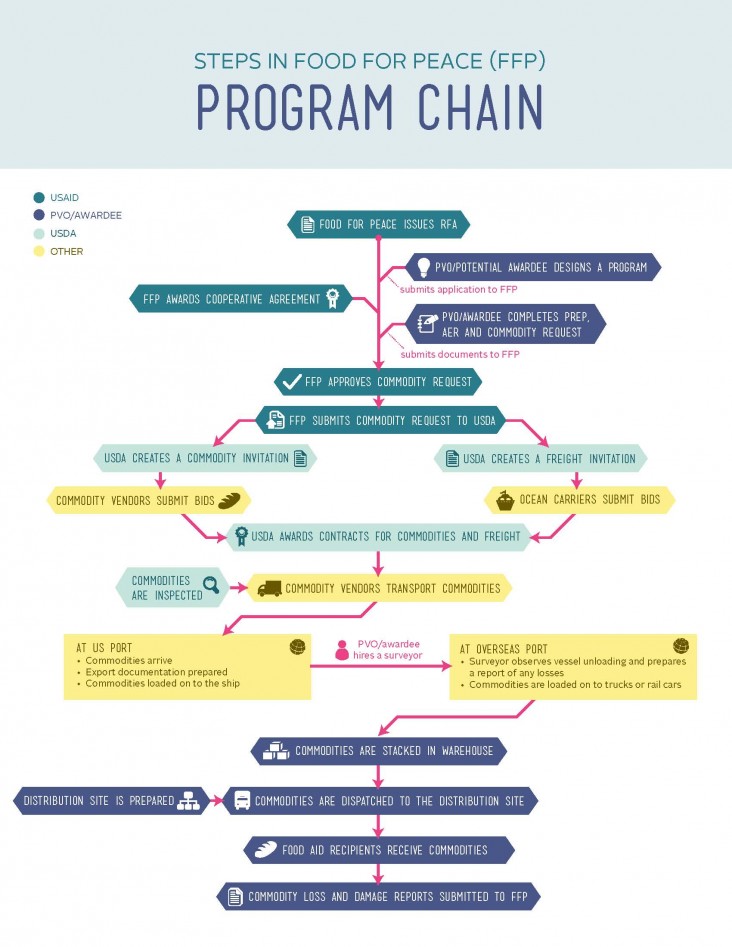Speeches Shim
USAID’s Food for Peace (FFP) Program works for a world free of hunger and poverty, where people live in dignity, peace, and security. FFP and its partners share one mission: to reduce hunger and malnutrition and assure that people everywhere have enough food at all times for healthy, productive lives. FFP is the work of farmers, businessmen, grain elevator operators, truckers, bargemen, freight forwarders, port operations, nongovernmental and international organizations, and government officials. Together they form an unbroken chain of humanity stretching from fertile fields in the United States to hungry families half a world away.
FFP is an expression of the compassion and goodwill of the people of the United States. FFP programs combat malnutrition, improve the livelihoods of vulnerable groups and mitigate the impact of disasters which are occurring with greater frequency.
1. Appropriations & Budgeting
-
USAID and State Department submit an annual budget to Congress. Congress reviews the budget request, determines the level of funding, and approves appropriations bills.
2. Proposal Submission/Appeal Issuance & Review
-
For development programs, Private Voluntary Organizations (PVOs) and International organizations(IOs) submit proposals based on FFP guidance. For emergencies, FFP often responds based on a proposal from a PVO or an appeal from an IO or a disaster declaration by the U.S. embassy in country.
-
USAID issues guidance that PVOs must follow when developing and implementing Title II programs. Since IOs (e.g. WFP) are not subject to U.S. regulations, they receive food aid according to a special agreement established with the U.S. government.
-
The Title II program is complemented by the Emergency Food Security program: it is designed to complement Title II and is used when Title II is either not appropriate or cannot arrive quickly enough for an effective emergency response.
3. Call Forward
-
USAID provides a list of eligible U.S. agricultural commodities, which FFP partners may request. Choosing from this list, and based on their local assessments of markets and needs, partners identify the types and amounts of commodities required and a schedule for delivery.
-
Once a Title II program is approved, partners order (“call forward”) commodities for delivery.
4. Procurement Invitation and Authorization
-
USDA procures the requested commodities by issuing tender to commodity suppliers and processors. All Title II commodities are purchased on the open market.
5. Shipment of Commodities
-
Through a tender process, working closely with USAID the partner arranges for the cargo to be shipped from the U.S. port to the recipient country.
-
In emergencies, USAID can tap into up to 100,000 tons of food that it has prepositioned in warehouses at the U.S. Gulf post and additional sites overseas to expedite response.
6. Program Implementation
-
Upon reaching its destination, the food is used in a variety of ways, and always for the people most vulnerable to the effects of hunger: children under age five, pregnant and lactating women, the elderly, and other vulnerable populations.
7. Program Closeout
-
At the end of the fiscal year, partners submit an “Annual Results Report,” which describes accomplishments for the year.


Comment
Make a general inquiry or suggest an improvement.